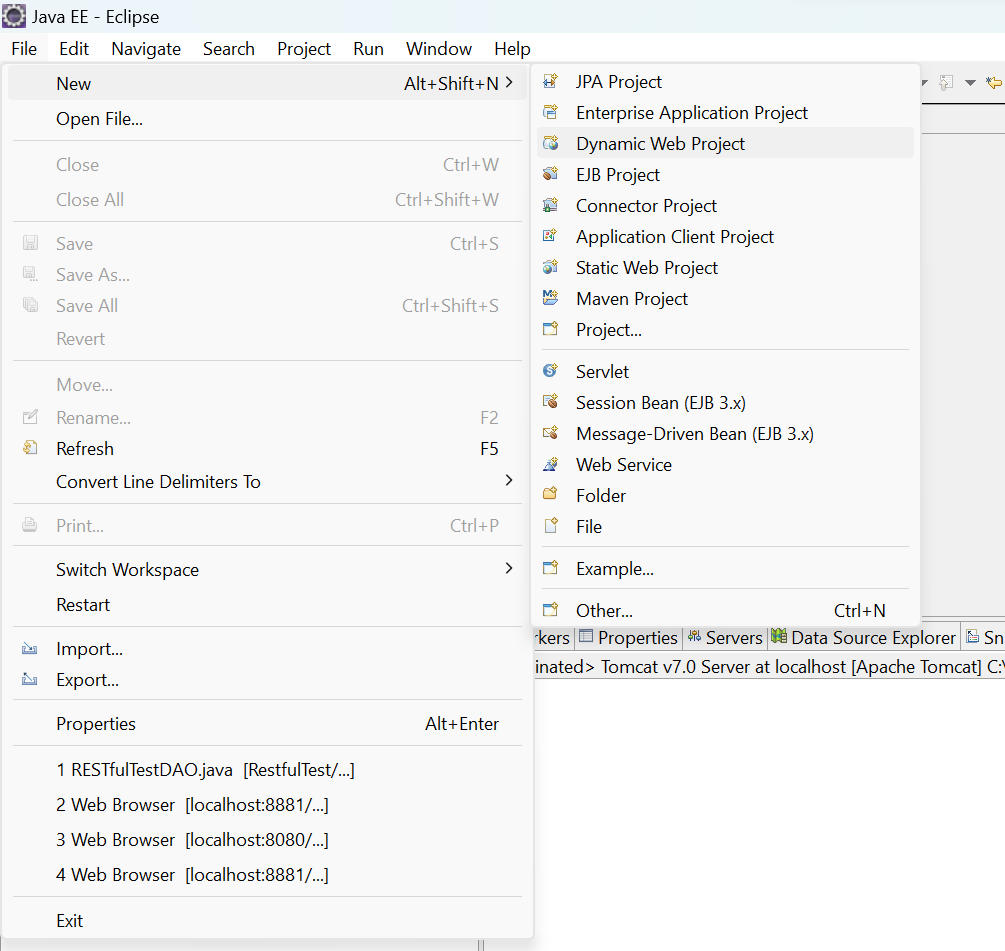Data Types in PL/SQL
PL/SQL - Data Types
In this chapter, we will discuss the Data Types in
PL/SQL. The PL/SQL variables, constants and parameters must have a valid data
type, which specifies a storage format, constraints, and a valid range of
values. We will focus on the SCALAR and the LOB data
types in this chapter. The other two data types will be covered in other
chapters.
|
S.No |
Category
& Description |
|
1 |
Scalar Single values with no internal components, such as
a NUMBER, DATE, or BOOLEAN. |
|
2 |
Large Object (LOB) Pointers to large objects that are stored separately
from other data items, such as text, graphic images, video clips, and sound
waveforms. |
|
3 |
Composite Data items that have internal components that can be
accessed individually. For example, collections and records. |
|
4 |
Reference Pointers to other data items. |
PL/SQL Scalar Data Types and Subtypes
PL/SQL Scalar Data Types and Subtypes come under the
following categories −
|
S.No |
Date
Type & Description |
|
1 |
Numeric Numeric values on which arithmetic operations are
performed. |
|
2 |
Character Alphanumeric values that represent single characters
or strings of characters. |
|
3 |
Boolean Logical values on which logical operations are
performed. |
|
4 |
Datetime Dates and times. |
PL/SQL provides subtypes of data types. For example,
the data type NUMBER has a subtype called INTEGER. You can use the subtypes in
your PL/SQL program to make the data types compatible with data types in other
programs while embedding the PL/SQL code in another program, such as a Java
program.
PL/SQL Numeric Data Types and Subtypes
Following table lists out the PL/SQL pre-defined
numeric data types and their sub-types −
|
S.No |
Data
Type & Description |
|
1 |
PLS_INTEGER Signed integer in range -2,147,483,648 through
2,147,483,647, represented in 32 bits |
|
2 |
BINARY_INTEGER Signed integer in range -2,147,483,648 through
2,147,483,647, represented in 32 bits |
|
3 |
BINARY_FLOAT Single-precision IEEE 754-format floating-point
number |
|
4 |
BINARY_DOUBLE Double-precision IEEE 754-format floating-point
number |
|
5 |
NUMBER(prec, scale) Fixed-point or floating-point number with absolute
value in range 1E-130 to (but not including) 1.0E126. A NUMBER variable can
also represent 0 |
|
6 |
DEC(prec, scale) ANSI specific fixed-point type with maximum
precision of 38 decimal digits |
|
7 |
DECIMAL(prec, scale) IBM specific fixed-point type with maximum precision
of 38 decimal digits |
|
8 |
NUMERIC(pre, secale) Floating type with maximum precision of 38 decimal
digits |
|
9 |
DOUBLE PRECISION ANSI specific floating-point type with maximum
precision of 126 binary digits (approximately 38 decimal digits) |
|
10 |
FLOAT ANSI and IBM specific floating-point type with
maximum precision of 126 binary digits (approximately 38 decimal digits) |
|
11 |
INT ANSI specific integer type with maximum precision of
38 decimal digits |
|
12 |
INTEGER ANSI and IBM specific integer type with maximum
precision of 38 decimal digits |
|
13 |
SMALLINT ANSI and IBM specific integer type with maximum
precision of 38 decimal digits |
|
14 |
REAL Floating-point type with maximum precision of 63
binary digits (approximately 18 decimal digits) |
Following is a valid declaration −
DECLARE Num1 INTEGER;
Num2 REAL;
Num3 DOUBLE PRECISION;
BEGIN
/* Business logic*/
END;
/
When the above code is compiled and executed, it
produces the following result −
PL/SQL procedure successfully completed
PL/SQL Character Data Types and Subtypes
Following is the detail of PL/SQL pre-defined
character data types and their sub-types −
|
S.No |
Data
Type & Description |
|
1 |
CHAR Fixed-length character string with maximum size of
32,767 bytes |
|
2 |
VARCHAR2 Variable-length character string with maximum size
of 32,767 bytes |
|
3 |
RAW Variable-length binary or byte string with maximum
size of 32,767 bytes, not interpreted by PL/SQL |
|
4 |
NCHAR Fixed-length national character string with maximum
size of 32,767 bytes |
|
5 |
NVARCHAR2 Variable-length national character string with
maximum size of 32,767 bytes |
|
6 |
LONG Variable-length character string with maximum size
of 32,760 bytes |
|
7 |
LONG RAW Variable-length binary or byte string with maximum
size of 32,760 bytes, not interpreted by PL/SQL |
|
8 |
ROWID Physical row identifier, the address of a row in an
ordinary table |
|
9 |
UROWID Universal row identifier (physical, logical, or
foreign row identifier) |
PL/SQL Boolean Data Types
The BOOLEAN data type stores logical
values that are used in logical operations. The logical values are the Boolean
values TRUE and FALSE and the value NULL.
However, SQL has no data type equivalent to BOOLEAN.
Therefore, Boolean values cannot be used in −
- SQL
statements
- Built-in
SQL functions (such as TO_CHAR)
- PL/SQL
functions invoked from SQL statements
PL/SQL Datetime and Interval Types
The DATE datatype is used to store
fixed-length datetimes, which include the time of day in seconds since
midnight. Valid dates range from January 1, 4712 BC to December 31, 9999 AD.
The default date format is set by the Oracle
initialization parameter NLS_DATE_FORMAT. For example, the default might be
'DD-MON-YY', which includes a two-digit number for the day of the month, an
abbreviation of the month name, and the last two digits of the year. For
example, 01-OCT-12.
Each DATE includes the century, year, month, day,
hour, minute, and second. The following table shows the valid values for each
field −
|
Field
Name |
Valid
Datetime Values |
Valid
Interval Values |
|
YEAR |
-4712 to 9999 (excluding year 0) |
Any nonzero integer |
|
MONTH |
01 to 12 |
0 to 11 |
|
DAY |
01 to 31 (limited by the values of
MONTH and YEAR, according to the rules of the calendar for the locale) |
Any nonzero integer |
|
HOUR |
00 to 23 |
0 to 23 |
|
MINUTE |
00 to 59 |
0 to 59 |
|
SECOND |
00 to 59.9(n), where 9(n) is the
precision of time fractional seconds |
0 to 59.9(n), where 9(n) is the
precision of interval fractional seconds |
|
TIMEZONE_HOUR |
-12 to 14 (range accommodates
daylight savings time changes) |
Not applicable |
|
TIMEZONE_MINUTE |
00 to 59 |
Not applicable |
|
TIMEZONE_REGION |
Found in the dynamic performance
view V$TIMEZONE_NAMES |
Not applicable |
|
TIMEZONE_ABBR |
Found in the dynamic performance
view V$TIMEZONE_NAMES |
Not applicable |
PL/SQL Large Object (LOB) Data Types
Large Object (LOB) data types refer to large data
items such as text, graphic images, video clips, and sound waveforms. LOB data
types allow efficient, random, piecewise access to this data. Following are the
predefined PL/SQL LOB data types −
|
Data
Type |
Description |
Size |
|
BFILE |
Used to store large binary objects
in operating system files outside the database. |
System-dependent. Cannot exceed 4
gigabytes (GB). |
|
BLOB |
Used to store large binary objects
in the database. |
8 to 128 terabytes (TB) |
|
CLOB |
Used to store large blocks of
character data in the database. |
8 to 128 TB |
|
NCLOB |
Used to store large blocks of NCHAR
data in the database. |
8 to 128 TB |
PL/SQL User-Defined Subtypes
A subtype is a subset of another data type, which is
called its base type. A subtype has the same valid operations as its base type,
but only a subset of its valid values.
PL/SQL predefines several subtypes in package STANDARD.
For example, PL/SQL predefines the subtypes CHARACTER and INTEGER as
follows –
SUBTYPE CHARACTER IS CHAR; SUBTYPE INTEGER IS NUMBER(38,0);
You can define and use your own subtypes. The
following program illustrates defining and using a user-defined subtype −
DECLARE SUBTYPE name IS char(30);
SUBTYPE dob IS date;
emp_name name;
date_of_join dob;
BEGIN
emp_name := 'Deepak Kumar Panda ';
date_of_join := '15-May-2022';
dbms_output.put_line('Result = ' || emp_name || date_of_join);
END;
/
When the above code is executed at the SQL prompt, it
produces the following result −
Hello Reader Welcome to the World of PL/SQL PL/SQL procedure successfully completed.
NULLs in PL/SQL
PL/SQL NULL values represent missing or unknown
data and they are not an integer, a character, or any other specific
data type. Note that NULL is not the same as an empty data
string or the null character value '\0'. A null can be assigned but
it cannot be equated with anything, including itself.
In this chapter, we will discuss Variables in Pl/SQL.
A variable is nothing but a name given to a storage area that our programs can
manipulate. Each variable in PL/SQL has a specific data type, which determines
the size and the layout of the variable's memory; the range of values that can
be stored within that memory and the set of operations that can be applied to
the variable.
The name of a PL/SQL variable consists of a letter
optionally followed by more letters, numerals, dollar signs, underscores, and
number signs and should not exceed 30 characters. By default, variable names
are not case-sensitive. You cannot use a reserved PL/SQL keyword as a variable
name.
PL/SQL programming language allows to define various
types of variables, such as date time data types, records, collections, etc.
which we will cover in subsequent chapters. For this chapter, let us study only
basic variable types.



Comments
Post a Comment